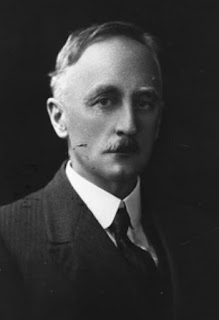Col. Light Sees It Through
While researching hauntings in Victoria Square, I came across this poem written by ‘A.M.’. It is a satirical look at goings-on in Victoria Square up until 1930, and strangely enough, it is pertinent today.
 |
| Victoria Square 1897 - SLSA: [B 1450] |
Col. Light Sees It Through
Colonel Light planned it all in the pioneer days
And the old city grandfathers fenced it round.
And grass they planted and Morton bays
That flourished apace in the fertile ground.
There teas room to wander, for rest and to spare,
And a shady retreat was Victoria Square.
All traffic was banned to the ringed-round street;
As kids we played on the green grass banks;
Our mothers rested tired housewives' feet
And weary men voted a weary man's thanks.
The darkness brought lovers with tales that are trite
And blessings for thoughtful old Colonel Light.
But men with notions of 'progress' and 'go'
Said, 'Cut tis a road from the south to the north
And another east-west across it,' - and lo!
It was said, it was done, and through it thenceforth
Wheels rattled and left us at heavy expense
Four scraps of a square and a mile of high fence.
Then tramway wreckers demanded their toll
And got it, of course, as tram bosses do.
'Now pull down the fence,' said the corporate soul,
'Let the proletariat (many or few)
Walk, heedless of entrance or paths if they must.'
So the fence was exchanged for a desert of dust.
Next someone in search of live things to uproot
Cried, 'Down with the trees! They have white ants, or snakes,
Distemper or tick; so put in the boot
And the axe just as promptly before the day breaks.
Thus, wisely forestalling the ratepayers' wrath.
We'll make this a garden — but nearly all path.'
But will it end there? Let no sceptic scoff,
All are possible things to the corporate mind.
Let's glance at the future— and not too far off—
To see what 'improvements' the clever can find.
'Flowers fade,' they will say, 'like a once solved charade.
'Let's make it all gravel — one big promenade.'
They will tire of that too and for changes will yearn
And, admitting a failure but saving a face,
Will conclude, 'the scheme's fine but we've money lo burn,
So we'll concrete or asphalt the whole dusty place.
Not a ghost of a tree, fence, flower or wall
Shall remain to annoy us, no -dashed thing at all'
Some future Lord Mayor or Alderman Mac
Will arise in his day to be the first speaker
With a brand-new idea, the best in the pack,
And shout, 'I've got it! I've got it! Eureka!
This asphalt is hot and hard on the knees,
Let's put up a fence, as high as you please,
DIG UP THE WHOLE PLACE AND PLANT GRASS AND TREES!'
And Light in his bronze will stagger, I'll swear,
But he'll point as of old, indicating, 'Well there
Is the place it's to be, MY Victoria Square.'
A. M.
Source:
'VICTORIA SQUARE', The Register News-Pictorial, (19 August 1930), p. 7., http://nla.gov.au/nla.news-article53803906.
Researched and compiled by Allen Tiller © 2020




